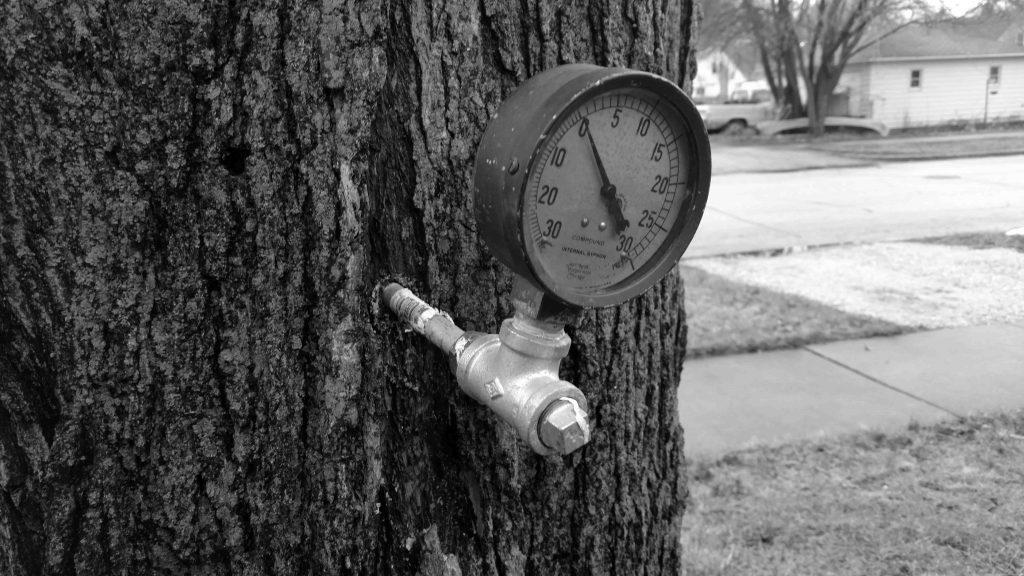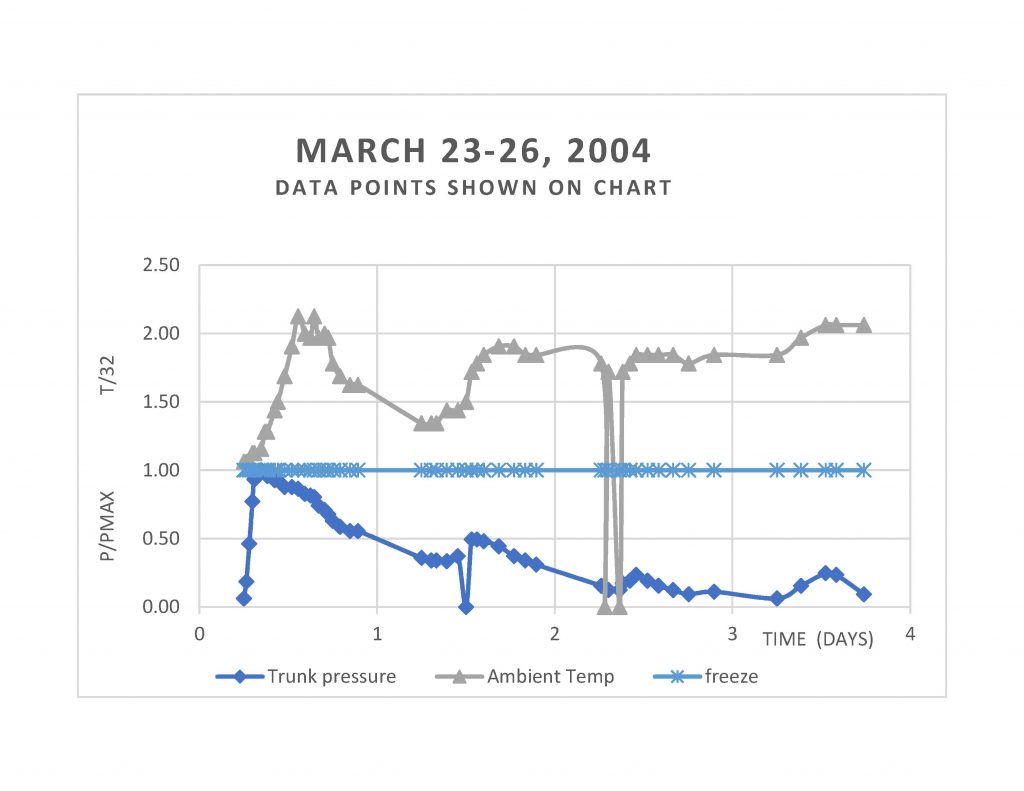Maple Tree Details
Our previous blogs about trees, “My Tree Leaks”, “Maple Syrup” were based on our theory of osmosis, “Osmosis: The Molecular Theory”, 2013” and measurements from our own sugar maple tree. We tapped the tree by drilling a 2 ½” deep hole through the bark and inserting a 3/8” pipe with a pressure gauge as shown in figure 1. The pipe was capped so we only measured pressure and did not withdraw liquid. If we uncapped the pipe, we would expect a sudden short gush of sap followed by a slow dripping flow.
Figure 1 Pressure gage inserted in Sugar Maple Tree
We propose that vapor pressure difference causes sap to rise from the roots to the leaves. Sap rises from cell to cell as vaper pressure driven osmosis and vapor, or capillary, flow in the intercellular spaces. Tree sap is mostly water. Water from 40 gallons of sap is evaporated to get one gallon of maple syrup. Evaporation from the leaves lowers the vapor pressure in the upper parts of the tree.
Maple tree sap is collected in the fall, spring, and during mild winters when the daily ambient temperature varies about the freezing point. The vapor condenses and freezes when temperature is below freezing. As the temperature rises above freezing, the warm air temperature thaws the frozen liquid in the in the upper small branches. This frozen liquid creates a static head that we see in our pressure gauge. During summer, sap moves up the tree as a vapor. The pressure gage remains at zero.
During winter, moisture vapor condenses, then freezes to put the tree into a dormant state. Maple syrup harvest occurs when temperature rises and falls about the freezing point. See figure 2. These measurements occurred during a mild winter. Negative pressure indicates that sap is frozen in the upper parts of the tree but remains as liquid in the more massive trunk. As ambient temperature rises above freezing, water in the upper, smaller branches thaws and creates a liquid column that we view as a positive pressure on our gauge. If we collected the liquid, we would see a temporary liquid flow followed by a slow drip rate.
Figure 2 Winter Pressure Measurements
During spring, as the temperature stays above freezing, we witness a slow pressure reduction as the liquid is slowly reabsorbed into the wood. See figure 3. During summer the pressure gauge remains at zero. Sap rises as a vapor to nourish the tree. There is only vapor and/or capillary flow.
Figure 3 Spring Pressure Measurements
DrOsmosis Blogs are supported by HTMD Engineering. We provide Quality Engineering Services and
will appreciate the opportunity to bid on some of your projects.



3 Replies to “Maple Tree Details”
Yay google is my queen helped me to find this outstanding web
site!
Hi there mates, pleasant paragraph and pleasant arguments commented here, I am really enjoying by these.
As I website possessor I believe the content material here is rattling excellent , appreciate it
for your hard work. You should keep it up forever!
Best of luck.